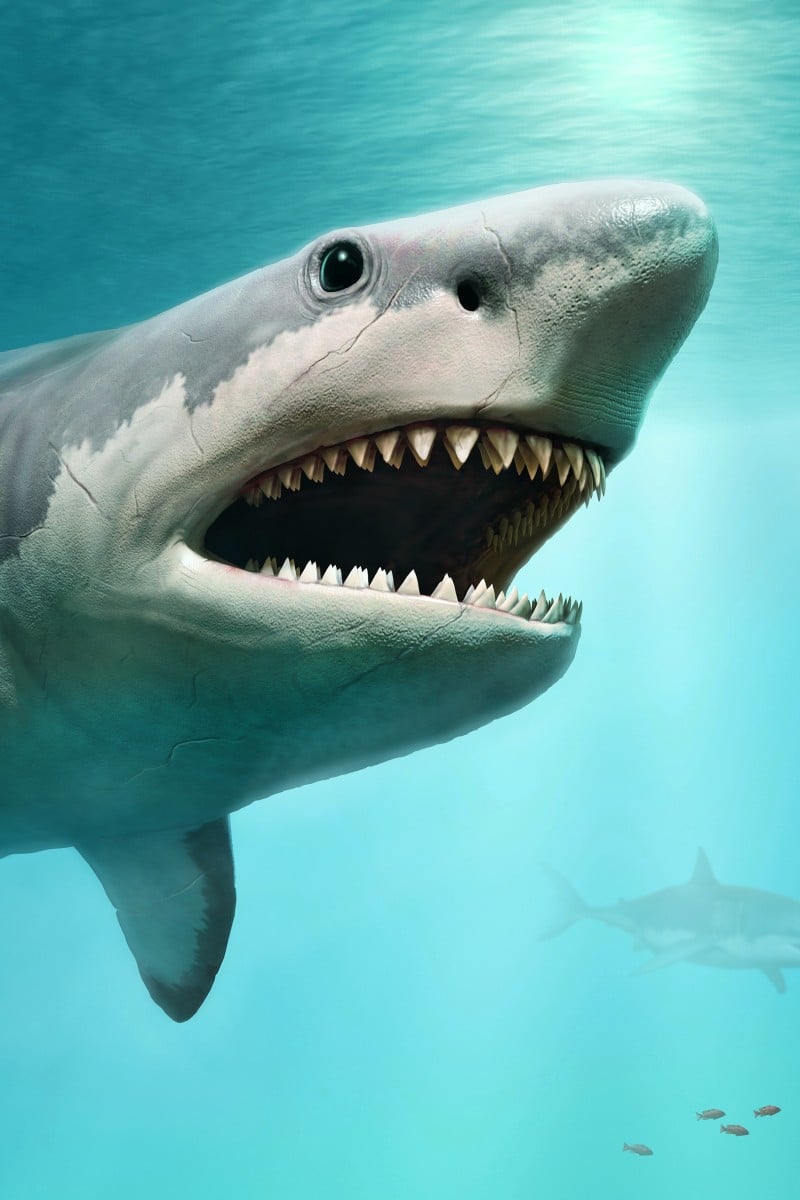
- Researchers have found that the 15-metre-long megatooth shark was warm-blooded, requiring more food than available after global cooling event
- Findings show how animals like the great white shark could be similarly vulnerable to climate change
 The megalodon is estimated to have been at least 15 metres long. It disappeared about 3.6 million years ago. Photo: Shutterstock
The megalodon is estimated to have been at least 15 metres long. It disappeared about 3.6 million years ago. Photo: ShutterstockScientists have discovered that the long-extinct megalodon, also known as the megatooth shark, had a body temperature 7 degrees Celsius warmer than the surrounding seawater. This information might explain how one of the largest marine apex predators went extinct.
The megalodon is estimated to have been at least 15 metres long. It disappeared about 3.6 million years ago.
Previously, scientists thought the megatooth might have been warm-blooded, but they had no evidence to support this idea until a study was published in June in the journal Proceedings of the National Academy of Sciences.
Heaviest animal ever? Scientists discover massive ancient whale that lived 40 million years ago
The study theorises that megalodons were regionally endothermic, which means they were able to regulate their temperature in certain body parts, similar to the modern great white and mako sharks. They are different from most fish, which are cold-blooded.
“Megalodon was quite a bit warmer than both of these modern apex predators [the great white and mako sharks], which makes megalodon unique,” said geochemist and paleoclimatologist Michael Griffiths of William Paterson University, the study’s lead author.
Findings also suggest that the rate at which it could generate heat through metabolic reactions was comparable to modern warm-blooded animals.
The researchers analysed the carbon-13 and oxygen-18 isotopes in a mineral in the megalodon’s fossil teeth called apatite. A tooth’s isotopic composition can reveal details such as where an animal lived and its diet – as well as the animal’s body temperature. Based on this information, scientists figured out that the megalodon’s average body temperature was about 27 degrees.
But to maintain its temperature for such a large body, the megalodon likely needed to eat a lot of prey.
“Warm-bloodedness requires constant high food intake to sustain high metabolism,” said paleobiologist and study co-author Kenshu Shimada of DePaul University.
Placoderm, Hong Kong’s oldest fossil, an armoured fish that ruled marine world for 200 million years
This constant need for food could have been the predator’s downfall. The megalodon went extinct at around the same time as the Earth’s temperature was cooling.
“It is quite possible that there was a shift in the marine ecosystem due to the climatic cooling that caused the sea level to drop,” Shimada explained, adding that the cooling probably affected the megalodon’s prey and led to a lack of food for the apex predator.
Griffiths told CNN that the findings also showed how today’s large apex predators, such as the great white shark, could be similarly vulnerable to climate change.
Which other sea animals are warm-blooded?
The megalodon, great white shark and mako shark are not the only warm-blooded marine animals. Others include aquatic mammals such as whales, dolphins, seals, sea lions, walruses and manatees.
In 2015, scientists discovered a fish that is fully warm-blooded: the opah keeps its entire body warm, similar to mammals and birds. In contrast, great white and mako sharks only warm certain muscles.
The opah keeps its body warm by flapping its fins to generate heat, while special nets in its gills maintain the heat throughout its body. This allows the opah to swim faster and be a more efficient hunter.